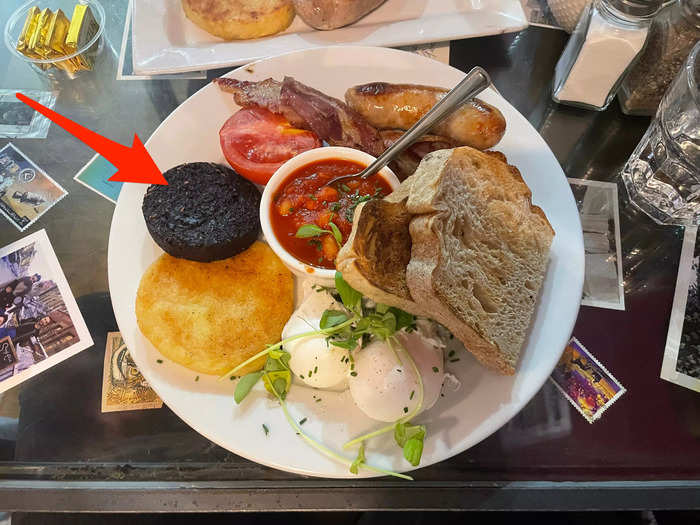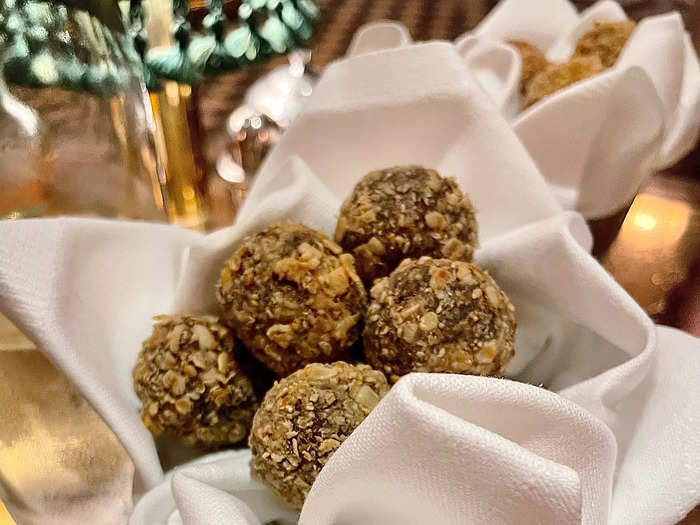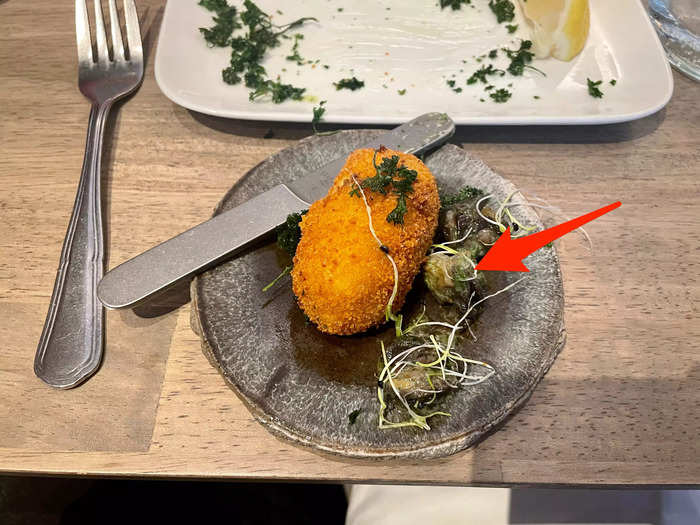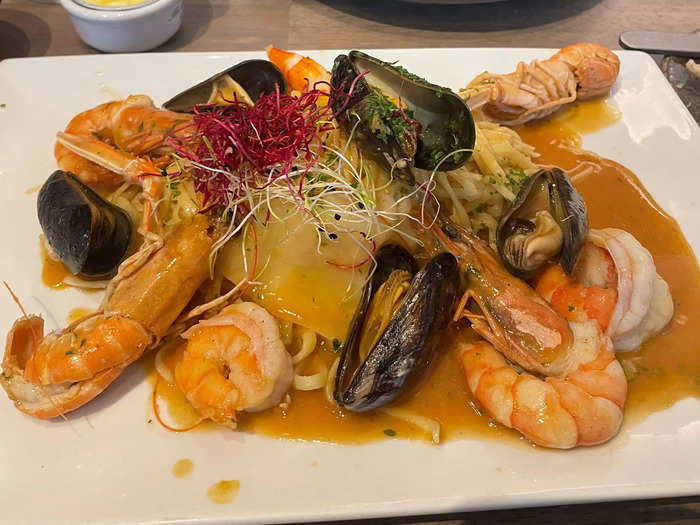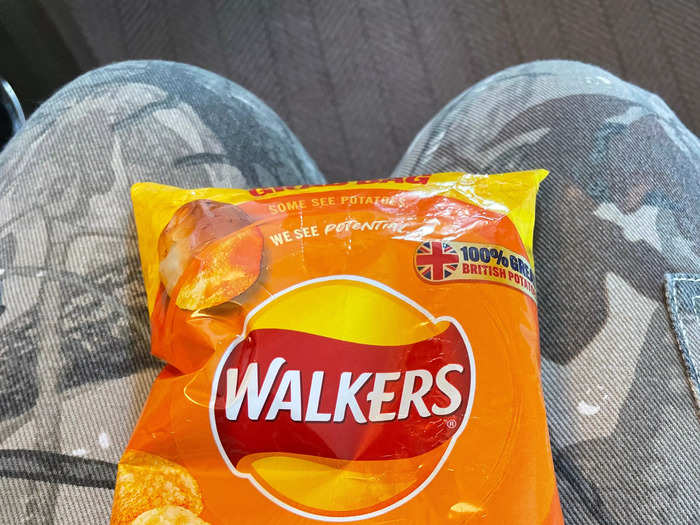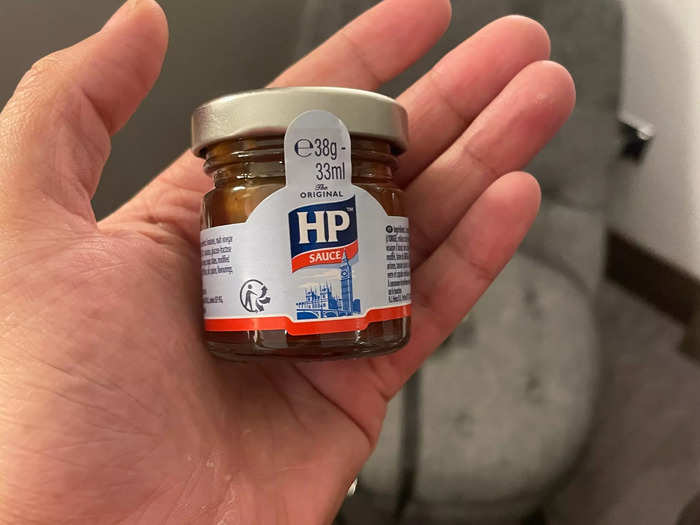I enjoyed haggis balls during my trip to Europe.Lauren Edmonds/Insider
- I spent 10 days in England, Scotland, and Belgium in September and early October.
- It was my first time trying several cuisines and European food staples.
The best part of vacationing is the food.
It's my humble opinion, but there's nothing more satisfying than traveling to a new destination and discovering that — yes — the local food is just as good as you imagined.
While working at Insider, I've covered my fair share of food drama and taste tests, but a recent girls' trip to Europe offered an unexpected opportunity to expand my palate.
Over 10 days, I traveled from New York City to London before visiting Glasgow and ending the trip in Brussels. I navigated five flights and an early morning train ride during my trip, but these six foods made it worth it.
I tried black pudding during breakfast in Scotland.
A photo of my Scottish breakfast, including black pudding and poached eggs. Lauren Edmonds/Insider
While in Glasgow, I made it my mission to try a traditional Scottish breakfast — or the closest version to it. That led me to Singl-end, a local café and bakehouse that serves the meaty breakfast: poached eggs, streaky bacon, loch byre link sausage, Stornoway black pudding, potato scone, grilled tomatoes, and smoky baked beans.
While I don't have much to say about the baked beans, I absolutely loved the black pudding. According to BBC Good Food, black pudding is a sausage made from animal blood — typically pork fat and oatmeal — before being packed into a casing.
It's divisive for some foodies who can't get past the blood, but I liked its meaty flavor and thought it was a good comfort food.
During a dinner in Scotland, I ate haggis balls.
Haggis balls served at The Ivy in Glasgow. Lauren Edmonds/Insider
While in Glasgow, I also had dinner at The Ivy Buchanan Street and had my first bite of haggis, which is a Scottish sausage made from parts of a sheep and cow mixed with oatmeal and seasoning. Many Americans may not have tried traditional haggis — made with sheep lungs — because the US banned livestock lungs from human food in 1971.
I ranked the bite-sized haggis balls as a top-five meal during my trip. The meat was well-seasoned, and the texture was surprisingly soft.
I had escargot for lunch in Belgium.
Escargot reminded me of mussels. Lauren Edmonds/Insider
In Brussels, I came face to face with Escargot — a French delicacy consisting of cooked snails — at the French restaurant Le Marmiton. I didn't know what to expect with Escargot, which has a floppy and somewhat chewy texture, but I didn't travel thousands of miles to wimp out because of snails.
For anyone wondering, Escargot is akin to mussels. They were slathered in garlic and butter and tasted absolutely delicious.
I enjoyed mussels for lunch in Belgium.
Mussels are a popular dish in Belgium. Lauren Edmonds/Insider
Belgium is known for its mussels, so there was no way I would visit Brussels without trying at least one plate at Le Marmiton. According to The Sydney Morning Herald, mussels gained popularity in Belgium during the 16th century because they were more affordable and available than fish.
This was the first meal during my trip that wasn't new to me.
I'm a Floridian who grew up on seafood, but the buttery flavors and soft, chewy texture still enchanted me. The mussels, alongside the seafood linguine, still make my mouth water even now that I'm back in New York City.
I discovered Walkers Roast Chicken Crisps in England.
I found Walkers Crisps while at the London Heathrow Airport. Lauren Edmonds/Insider
Imagine my surprise when I perused a store at the London Heathrow Airport and found Walkers Crisps. The logo caught my eye because it resembled the American chip company Lays.
PepsiCo — which owns Frito-Lay and Lays — purchased Walker Crisps in July 1989, according to the Los Angeles Times.
I doubted the chips would live up to its purported roast chicken flavor, but I was pleasantly surprised that they were spot on. It didn't encapsulate the flavor to a T, but I tasted hints of chicken stock that drove home the point.
Britain's Heinz HP is good to eat anytime.
Britain's HP Sauce is similar to America's A.1. Sauce. Lauren Edmonds/Insider
Some people like ranch dressing, others swear by ketchup, but my favorite sauce has — and continues to be — HP Sauce. The British condiment is a brown steak sauce created in 1899 and known for its distinct taste, according to its website.
The sauce contains tomatoes, vinegar, molasses, and seasoning, so Americans might liken it to A.1. Sauce.
HP Sauce is rich and tangy and goes well with meats and other items.

